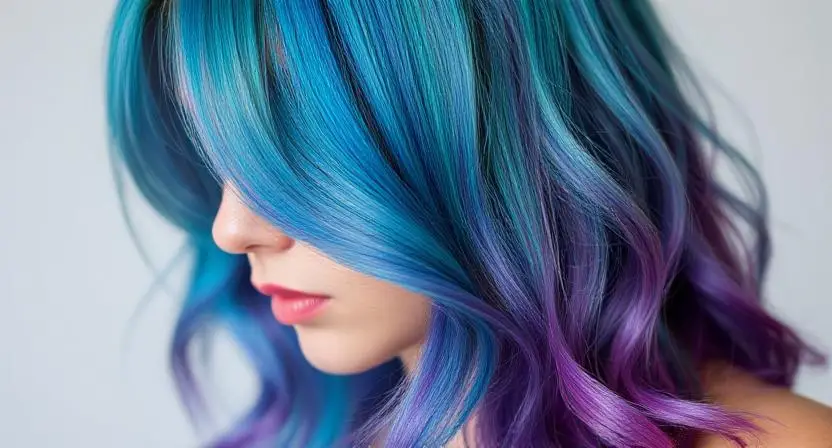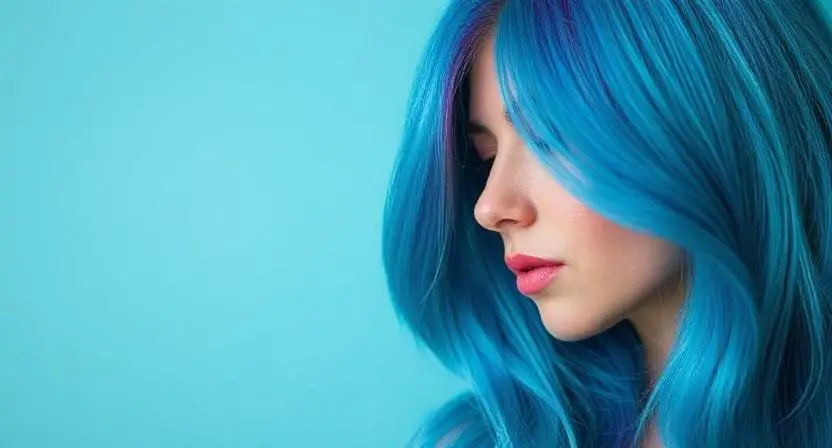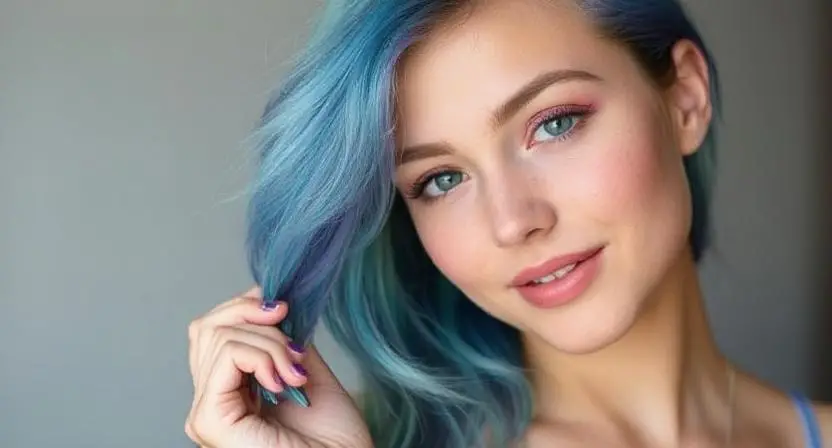Table of Contents
Color Oops is a popular hair color remover that can save you from a dye job gone wrong. However, using it incorrectly can lead to dryness, breakage, or uneven results. To ensure you get the best results while keeping your hair healthy, this guide provides detailed, step-by-step instructions, answers to common questions, and pro tips to help you use Color Oops safely and effectively.
What is Color Oops and How Does It Work?

Color Oops is a hair color remover that works on oxidative dyes, including permanent and semi-permanent hair colors. Unlike bleach, which strips your hair of its natural pigment, Color Oops targets the dye molecules in your hair. Here’s how it works:
- Shrinks Dye Molecules: The active ingredients in Color Oops break down the dye molecules, making them small enough to be rinsed out.
- Gentle on Hair: While it’s not completely damage-free, it’s much gentler than bleach and doesn’t lighten your natural hair color.
- Versatile: It can be used on most hair types and colors, including previously bleached or chemically treated hair.
Top Tips for Using Color Oops Safely

To minimize damage and achieve the best results, follow these detailed tips when using Color Oops:
1. Prepare Your Hair Properly
- Wash Your Hair: Use a clarifying shampoo to remove any product buildup, oils, or silicones. Avoid conditioning your hair before application, as conditioners can create a barrier that prevents Color Oops from penetrating effectively.
- Perform a Strand Test: Before applying Color Oops to your entire head, test it on a small section of hair to see how your hair reacts. This is especially important if you have previously bleached or damaged hair.
- Gather Your Supplies: You’ll need Color Oops, gloves, a timer, a wide-tooth comb, a bowl, and a gentle shampoo and conditioner.
2. Follow the Instructions Carefully
- Mix the Solution: Follow the instructions on the Color Oops package to mix the solution. Wear gloves to protect your hands from irritation.
- Apply Evenly: Start applying the solution from the roots to the ends, ensuring full coverage. Use a wide-tooth comb to distribute the product evenly and avoid missing any spots.
- Set a Timer: Leave the solution on your hair for the recommended time (usually 20-30 minutes). Avoid leaving it on longer, as this can dry out your hair and cause damage.
3. Rinse Thoroughly
- Rinse your hair with warm water for 10-15 minutes or until the water runs clear. Thorough rinsing ensures all product residue is removed, preventing buildup and further damage.
- Avoid Shampooing Immediately: Do not shampoo your hair right after rinsing. Wait at least 24 hours before shampooing to allow your hair cuticles to close and stabilize.
4. Deep Condition After Use
- After rinsing, use a deep conditioning treatment to restore moisture and prevent dryness. Look for products with ingredients like shea butter, argan oil, or keratin to nourish and strengthen your hair.
- DIY Hair Mask Option: Mix 2 tablespoons of coconut oil with 1 tablespoon of honey and apply it to your hair. Leave it on for 30 minutes before rinsing for an extra boost of hydration.
5. Avoid Heat Styling Immediately After
- Give your hair a break from heat styling tools for at least 2-3 days to allow it to recover. If you must use heat, apply a heat protectant and use the lowest setting possible.
Common Mistakes to Avoid

- Over-Processing: Leaving Color Oops on for too long can dry out your hair and cause damage. Stick to the recommended processing time.
- Skipping Deep Conditioning: Failing to deep condition after using Color Oops can leave your hair dry and brittle.
- Re-Dyeing Too Soon: Wait at least 48 hours before re-dyeing your hair to allow it to recover.
- Using on Wet Hair: Always apply Color Oops to dry hair, as wet hair can dilute the product and reduce its effectiveness.
What to Expect After Using Color Oops
After using Color Oops, your hair may feel dry or slightly rough. This is normal and can be addressed with proper aftercare. Depending on your natural hair color and the type of dye used, your hair may lighten to a reddish or orange tone. This is because Color Oops removes the artificial dye but doesn’t affect your natural pigment.
Pro Tips for Better Results
- Use a Plastic Bowl and Brush: Avoid metal tools, as they can react with the product.
- Ventilate the Area: Color Oops has a strong smell, so use it in a well-ventilated area.
- Patch Test for Allergies: Apply a small amount of the product behind your ear and wait 24 hours to check for any allergic reactions.
Conclusion
Using Color Oops can be a game-changer for removing unwanted hair color, but it’s important to follow the right steps to avoid damage. By preparing your hair properly, following the instructions carefully, and taking care of your hair afterward, you can achieve safe and effective results. Remember, healthy hair is beautiful hair, so take your time and prioritize its well-being!
Color Oops FAQs
1. Can I use Color Oops on bleached hair?
Yes, but be cautious as bleached hair is more fragile. Deep condition before and after using Color Oops, and perform a strand test to ensure your hair can handle it.
2. How often can I use Color Oops without damaging my hair?
It’s best to use Color Oops sparingly. Wait at least 2-3 weeks between applications to allow your hair to recover.
3. What should I do if my hair feels dry after using Color Oops?
Use a deep conditioning treatment or hair mask to restore moisture. Avoid heat styling until your hair feels healthier. You can also try using a leave-in conditioner for added hydration.
4. Can I use Color Oops on curly or textured hair?
Yes, but be gentle when applying and rinsing to avoid tangling. Deep condition afterward to maintain moisture and prevent frizz.
5. How long should I wait to dye my hair after using Color Oops?
Wait at least 48 hours to allow your hair to recover before re-dyeing. This gives your hair time to rebuild its natural moisture barrier.
6. Will Color Oops remove all hair dye?
Color Oops is effective at removing oxidative dyes (permanent and semi-permanent), but it may not work on direct dyes (e.g., manic panic) or henna.
7. Can I use Color Oops on synthetic hair extensions?
No, Color Oops is designed for natural hair only. Using it on synthetic extensions can damage them.
8. What if my hair turns orange after using Color Oops?
This is common, especially if you previously had dark hair. You can neutralize the orange tones with a blue or purple toner or consult a professional for color correction.
Color Oops FAQs
1. Can I use Color Oops on bleached hair?
Yes, but be cautious as bleached hair is more fragile. Deep condition before and after using Color Oops, and perform a strand test to ensure your hair can handle it.
2. How often can I use Color Oops without damaging my hair?
It’s best to use Color Oops sparingly. Wait at least 2-3 weeks between applications to allow your hair to recover.
3. What should I do if my hair feels dry after using Color Oops?
Use a deep conditioning treatment or hair mask to restore moisture. Avoid heat styling until your hair feels healthier. You can also try using a leave-in conditioner for added hydration.
4. Can I use Color Oops on curly or textured hair?
Yes, but be gentle when applying and rinsing to avoid tangling. Deep condition afterward to maintain moisture and prevent frizz.
5. How long should I wait to dye my hair after using Color Oops?
Wait at least 48 hours to allow your hair to recover before re-dyeing. This gives your hair time to rebuild its natural moisture barrier.
6. Will Color Oops remove all hair dye?
Color Oops is effective at removing oxidative dyes (permanent and semi-permanent), but it may not work on direct dyes (e.g., manic panic) or henna.
7. Can I use Color Oops on synthetic hair extensions?
No, Color Oops is designed for natural hair only. Using it on synthetic extensions can damage them.
8. What if my hair turns orange after using Color Oops?
This is common, especially if you previously had dark hair. You can neutralize the orange tones with a blue or purple toner or consult a professional for color correction.

